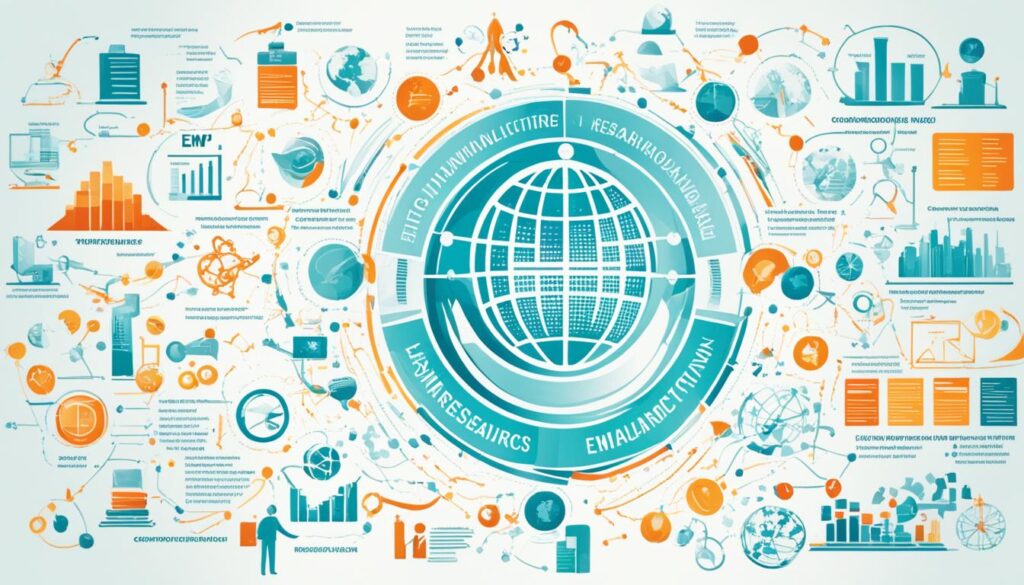Disclosure: This Post Contains Affiliate Links; We earn a commission on purchases.
The International EMF Project, initiated by the World Health Organization (WHO) in 1996, plays a significant role in assessing the health and environmental effects of exposure to electric and magnetic fields (EMF). With the aim of developing scientifically-sound health risk assessments and harmonizing international standards, the project brings together key international and national agencies to review scientific literature, encourage high-quality research, and provide information on risk communication and management.
As the number of devices and technologies emitting EMF continues to increase, it is crucial to have global standards and guidelines in place to ensure the safety of individuals worldwide. However, harmonizing these standards globally and ensuring widespread adoption of EMF safety regulations pose significant challenges. This article explores the progress made and the obstacles faced by the International EMF Project in its journey towards harmonizing international standards on EMF.
Key Takeaways:
- International EMF Project aims to harmonize international standards on EMF
- Mission is to conduct health risk assessments and provide information on risk management
- Faces challenges in global harmonization and adoption of guidelines
- Collaborates with international organizations and WHO collaborating centers
- Coordinates research evaluations and develops international standards for non-ionizing radiation protection
Harmonizing international standards on EMF is crucial for safeguarding public health and ensuring consistent guidelines for EMF safety. By overcoming challenges and collaborating with various stakeholders, the International EMF Project continues to make progress towards this goal.
The Importance of International Collaboration
International collaboration plays a crucial role in the efforts of the International EMF Project to address the health concerns associated with electromagnetic fields (EMF) exposure. By collaborating with various organizations, including international bodies, non-governmental organizations (NGOs), and WHO collaborating centres, the project can effectively coordinate research activities, disseminate scientific information, and develop EMF guidelines.
One of the key collaborations of the International EMF Project is with the Agency for Research on Cancer (IARC), an organization that specializes in cancer research. This collaboration enables the project to align its research efforts with IARC’s expertise, facilitating a comprehensive understanding of the potential risks and effects of EMF exposure. By leveraging the wealth of resources and knowledge available through collaborations like these, the project can make significant strides in advancing EMF research and protection.
Additionally, the International EMF Project collaborates with individual experts and institutions from around the world. This collaboration ensures that a diverse range of perspectives and expertise is incorporated into the project’s activities. By engaging with these experts, the project can address specific health concerns raised by EMF exposure and gather valuable insights to inform the development of guidelines and risk assessment frameworks.
The International Advisory Committee, comprising experts in the field of EMF research, plays a pivotal role in providing oversight and guidance to the project. Through regular peer discussions and knowledge sharing, this committee helps shape the project’s direction, ensuring that it remains focused on addressing the most significant EMF health concerns.
International collaboration is essential for the success of the International EMF Project. By leveraging the expertise and resources of various organizations and individuals, the project can advance its goal of harmonizing international EMF guidelines and promoting global EMF safety standards.
Research Evaluation and Coordination
The International EMF Project plays a crucial role in advancing our understanding of the health effects of electromagnetic fields (EMF) through research evaluation and coordination. By conducting thorough research evaluations, the project reviews scientific literature on the biological effects of EMF exposure, helping to identify existing knowledge gaps.
Research coordination is another key focus area for the project, as it works to facilitate collaboration and cooperation among international researchers and national agencies. By coordinating research agendas and providing valuable input, the project ensures that research efforts are aligned and focused on addressing critical areas of concern.
In order to streamline the collection and dissemination of research findings, the project has established a comprehensive research database. This database serves as a valuable resource, allowing researchers, policymakers, and other stakeholders to access and utilize important research findings.
Ongoing research priorities within the International EMF Project include evaluating the health risks associated with exposure to static and extremely low-frequency (ELF) fields. By prioritizing these areas of research, the project aims to contribute to a comprehensive understanding of the potential health effects of EMF exposure.
Research Evaluation
The research evaluation process within the International EMF Project involves critically reviewing scientific literature to assess the current state of knowledge regarding EMF health effects. Through this evaluation, gaps in existing research can be identified, helping to guide future research efforts and inform policy decisions. The project takes into account a wide range of studies, including those conducted in laboratories, as well as epidemiological and population-based studies.
| Benefits of Research Evaluation | Challenges of Research Evaluation |
|---|---|
|
|
Research Coordination
Research coordination is an essential aspect of the International EMF Project’s work. By facilitating collaboration and cooperation among researchers, the project ensures that efforts are coordinated and focused on addressing key research questions. This coordination helps to avoid duplication of research and enables the pooling of resources and expertise.
A coordinated research approach allows for the sharing of data, methodologies, and best practices, ultimately leading to more robust and reliable research outcomes.
In addition to coordination among researchers, the project also collaborates with national agencies to provide input on research priorities and agenda setting. This collaboration helps to ensure that research efforts are aligned with national and international policy goals, improving the overall effectiveness and impact of the research.
The International EMF Project’s research evaluation and coordination activities contribute to the global understanding of EMF health effects, guiding future research efforts, and informing policy decisions. By addressing research gaps, coordinating research agendas, and establishing a collaborative network, the project plays a vital role in advancing EMF research and ensuring the safety of individuals exposed to EMF.

International Standards for Non-Ionizing Radiation Protection
The International EMF Project is committed to establishing international standards for non-ionizing radiation protection. Through a thorough review of scientific literature and collaboration with experts and government officials from various regions, the project aims to develop harmonized standards that prioritize the safety of individuals exposed to electromagnetic fields (EMF) in the frequency range of 0-300 GHz.
To achieve this goal, the project engages in several activities:
- Reviewing Scientific Literature: The project thoroughly examines the latest research findings and studies on the biological effects of EMF exposure. By identifying gaps in knowledge, they contribute to the development of robust international standards.
- Engagement with Experts and Government Officials: Collaboration with experts and government officials from different regions allows for diverse perspectives and insights. By bringing together global stakeholders, the project ensures the standards account for varying regional needs and considerations.
- Standards Database: The International EMF Project develops a comprehensive standards database to centralize and disseminate the established international standards. This resource provides easy access to the guidelines for countries and organizations seeking to align their regulations with international benchmarks.

The International EMF Project also plays an essential role in supporting countries in their efforts to align their regulations with international standards. By offering guidance, expertise, and technical assistance, the project facilitates the adoption of harmonized guidelines worldwide.
“The establishment of international standards for non-ionizing radiation protection is a vital step toward safeguarding individuals from the potential health risks associated with EMF exposure. By harmonizing guidelines globally, we can ensure consistent and effective measures for EMF protection.” – Dr. Jane Mitchell, EMF Expert
Through its dedication to international standards, the International EMF Project aims to enhance the safety of individuals exposed to non-ionizing radiation and promote global harmonization in EMF protection policies.
Risk Communication and Resources
The International EMF Project places a significant emphasis on risk communication to effectively disseminate information on EMF exposure risks. By providing accessible EMF resources and WHO publications, the project aims to empower individuals and communities with the knowledge needed to make informed decisions regarding EMF exposure.
The project’s primary resource is the WHO website, which serves as a comprehensive hub of information on EMF. Visitors to the website can access a wealth of resources, including detailed guides, scientific reports, and educational materials on the health effects of EMF exposure. The website also provides links to national contacts for those seeking localized information and support.
One of the project’s core strategies for risk communication is the development and dissemination of publications. These include fact sheets that condense complex scientific knowledge into easily digestible formats, ensuring that the public can access information relevant to their specific concerns. Additionally, the project focuses on providing translations of key resources to reach a wider audience, allowing individuals from diverse backgrounds to access crucial EMF information in their native languages.
Meetings and enquiries are also integral to the project’s risk communication efforts. By facilitating face-to-face interactions and offering avenues for individuals to voice their concerns and seek clarifications, the project ensures that the public feels heard and supported in navigating the complexities of EMF exposure.
Ultimately, the International EMF Project strives to bridge the gap between scientific knowledge and public understanding by employing effective risk communication strategies. By equipping individuals with the necessary resources and information, the project empowers them to make informed decisions and take appropriate measures to mitigate potential risks associated with EMF exposure.
The Journey Towards Harmonizing Standards: Challenges and Progress
The journey towards harmonizing international standards on EMF poses several challenges. One of these challenges is the need to establish effective communication and collaboration with government agencies in different countries to promote the adoption of EMF protection measures. This process involves identifying the appropriate contacts and building relationships to facilitate the exchange of knowledge and expertise.
Another obstacle is the resistance encountered by some nations in implementing the recommendations put forth by the International EMF Project. The project’s efforts to harmonize standards may face opposition due to various reasons, such as conflicting priorities, differing regulatory frameworks, or limited resources. Overcoming these barriers requires persistent advocacy and the demonstration of the benefits of EMF regulations.
The existence of diverse scientific evidence and varying review standards worldwide further complicates the harmonization process. Different research findings and methodologies can lead to contrasting conclusions regarding the health effects of EMF exposure. Aligning these diverse viewpoints and establishing a consensus on the appropriate standards requires thorough evaluation, expert consensus, and transparent decision-making processes.
“Harmonizing international standards on EMF is a complex task that requires addressing various challenges and reconciling different perspectives. However, progress has been made in several key areas.”
The International EMF Project has made significant progress in its mission to harmonize international standards. Through its efforts, the project has reviewed extensive scientific literature, facilitating a better understanding of the risks associated with EMF exposure. The coordination of research activities has allowed for the identification of gaps in knowledge and the establishment of research priorities.
In addition, the project has developed comprehensive health risk assessments based on the available evidence, which serve as foundations for establishing international standards. These assessments consider the potential biological effects of EMF exposure and provide guidance for regulatory bodies in formulating appropriate regulations.
The establishment of international standards is a crucial step towards ensuring the safety of individuals exposed to EMF. These standards provide a framework for governments to develop regulations that protect public health while enabling the use of essential technologies. They promote consistency in EMF regulation globally, facilitate international cooperation, and foster public trust and confidence.
| Challenges | Progress |
|---|---|
| Need for communication and collaboration with government agencies | Reviewing scientific literature |
| Resistance from some nations | Coordinating research activities |
| Diverse scientific evidence and review standards | Developing health risk assessments |
The Path Forward: Advancing Global Harmonization
As the International EMF Project looks to the future, its focus remains on advancing global harmonization. To achieve this, the project will continue its research evaluations, coordinate research activities, and develop health risk assessments. By refining the framework for international standards based on inputs received from scientists and government officials, the project aims to establish comprehensive guidelines for EMF exposure worldwide.
One of the key objectives is to align EMF policies with international standards. This will ensure that countries across the globe share harmonized regulations to protect individuals from the potential health risks associated with EMF exposure. By promoting EMF policy alignment, the project aims to create a unified approach to EMF safety that transcends national boundaries.
Addressing the needs of different regions is also a priority for the International EMF Project. Recognizing that each region may have unique challenges and concerns related to EMF, the project strives to develop guidelines that cater to the specific requirements of diverse communities. By tailoring its efforts to meet regional needs, the project aims to facilitate the adoption of harmonized guidelines on a global scale.
Continued collaboration with international organizations, scientists, and government officials will be crucial in advancing global harmonization. By working together, these stakeholders can contribute their expertise and insights to the ongoing efforts of the International EMF Project. Through collaboration, the project can leverage diverse perspectives and ensure that its initiatives reflect the best available scientific evidence and global consensus.
“Advancing global harmonization is a complex task,” says Dr. Maria Neira, Director of the Department of Environment, Climate Change and Health at WHO. “However, the International EMF Project is committed to fostering collaboration, aligning policies, and establishing international standards that promote the safe use of technology while protecting public health.”
With its unwavering dedication to advancing global harmonization, the International EMF Project envisions a future where individuals around the world can confidently utilize technology while minimizing potential health risks associated with EMF exposure.
| Benefits of Advancing Global Harmonization | Challenges in Achieving Harmonization |
|---|---|
|
|
Conclusion
The International EMF Project has embarked on a challenging but progressive journey towards harmonizing international standards on EMF. With the support of collaboration with international organizations and WHO collaborating centers, significant strides have been made in reviewing scientific literature, coordinating research, and developing health risk assessments.
These efforts have contributed to a better understanding of EMF risks and the establishment of harmonized guidelines globally. However, challenges still exist, requiring continued research, coordination, and alignment of policies with international standards.
Moving forward, it is crucial to prioritize the safety of individuals exposed to EMF by conducting further research, coordinating efforts among key stakeholders, and ensuring adherence to global EMF guidelines. With ongoing commitment and collaboration, the International EMF Project aims to advance the field, protect public health, and foster a global environment where EMF exposure is carefully managed and regulated.
Source Links
- https://www.who.int/docs/default-source/radiation-international-emf-project-reports/emf-iac-2003-progress-report.pdf?sfvrsn=7480c1a7_2
- https://cdn.who.int/media/docs/default-source/radiation-international-emf-project-reports/emf-iac-2016-progress-report.pdf?sfvrsn=7b2836c0_3&download=true
- https://estsjournal.org/index.php/ests/article/download/41/33/

Subscribe to Our Newsletter










